'Basically what drives the economy right now': Nature-based work plays big role in Santa Cruz County
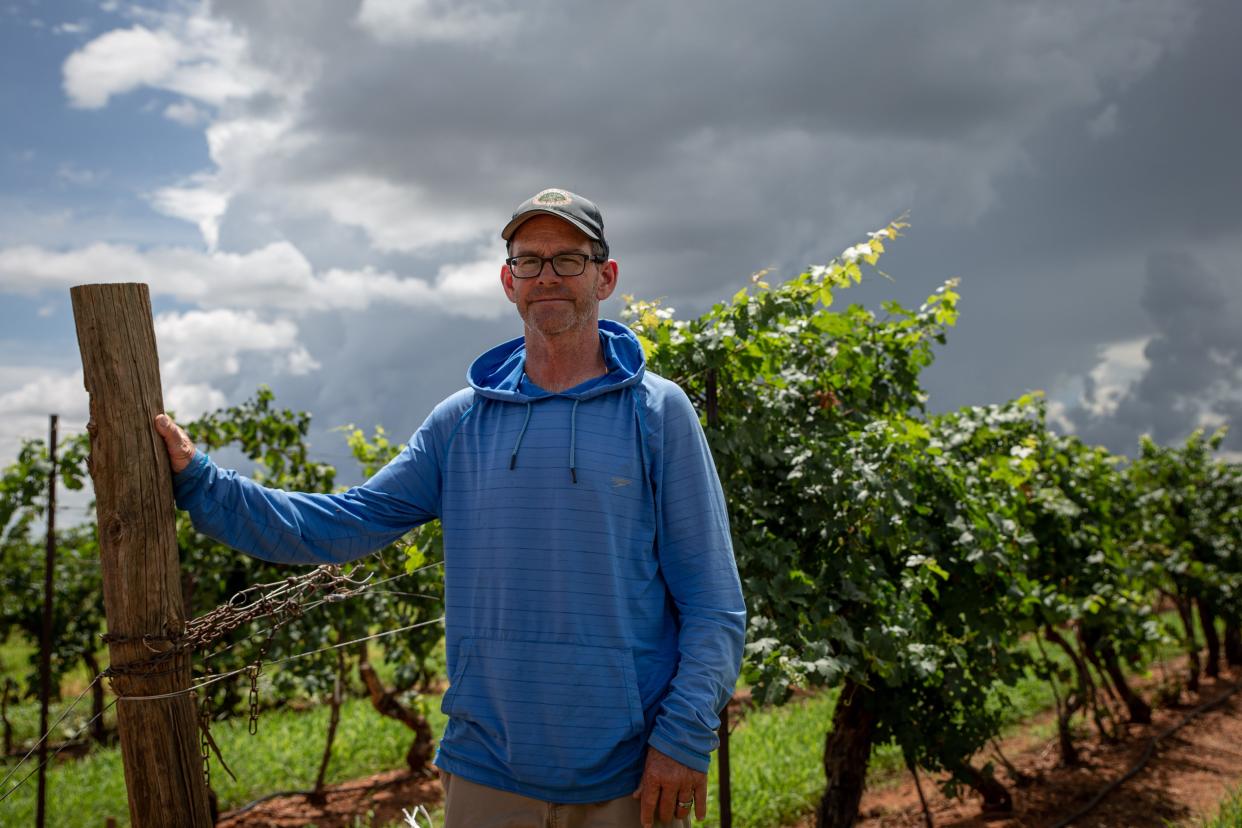
Corrections & Clarifications: An initial version of this article incorrectly stated how Kent Callaghan received the winery. It's a partnership.
For the last two years, the harvest at Callaghan Vineyards in southern Arizona was decimated. This year, they will finally have a harvest.
After two hailstorms in August 2020 and the worst first fall frost in decades, Kent Callaghan's harvests were all but wiped out.
Thankfully, Callaghan had overproduced wine for several years and had enough inventory to make it through the challenging seasons. Last year, was spent revitalizing the vineyard.
"Depending on what happens you're either an idiot or a genius," he said, about making too much wine. In his case, it saved his family's 32-year-old vineyard.
Callaghan Vineyards is one of 21 wineries in the Sonoita-Elgin area, located about an hour's drive southeast of Tucson.
With the onset of harvest season, which runs from August to October, Callaghan looked out upon his vineyards last week, surrounded by rolling green hills and pastures.
The picturesque scene was peaceful and quiet, except for the occasional bird alarm, which sounded like squawking birds, that would go off every so often to scare away ravens.
Callaghan recalled the ways in which he has learned to adapt and work with the land to produce his wine.
Nature: How wildfires are changing the Santa Catalina Mountains
Callaghan said he stopped tilling in-between the grape vines once he realized how he was eroding his land, he changed grape varieties to those better suited to Arizona's weather, and he only farms on 22 acres out of his 25-acre plot.
He said that he only farms on the land that produces the best harvest.
Wineries like Callaghan's are part of Santa Cruz County's nature-based restorative economy, which plays a significant role in the county’s rural economy.
A study conducted by researchers at the University of Arizona in 2021 looked at data from 2019 to put a price tag on nature-based work in Santa Cruz County, which sits along the U.S.-Mexico border in southern Arizona.
What is the nature-based restorative economy?
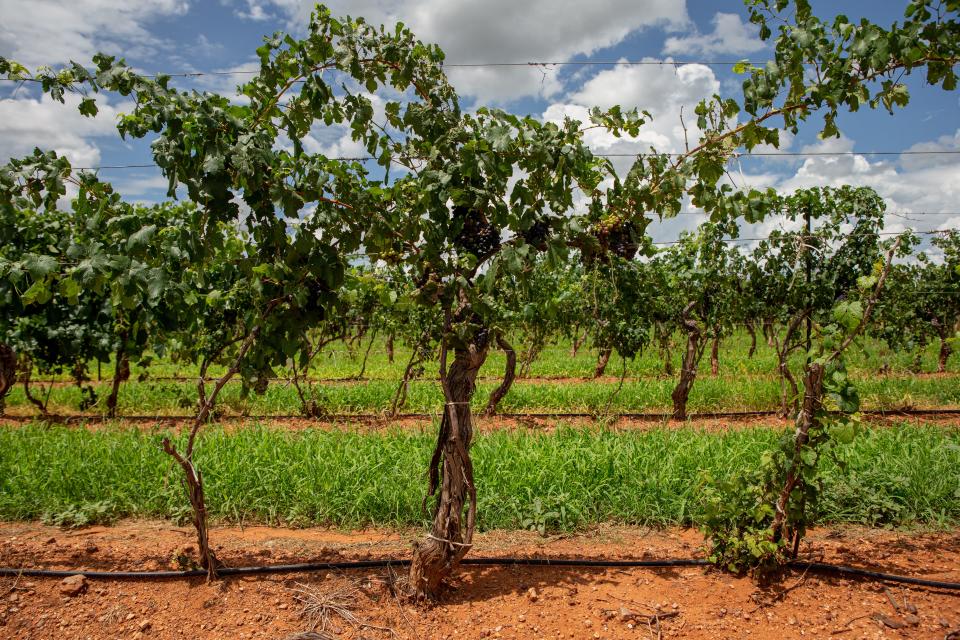
The nature-based restorative economy includes jobs in restoration as an economic activity, agricultural work including ranching, winemaking, and locally grown and processed foods; and nature-based tourism like hunting and visiting parks.
"It's basically what drives the economy right now," Callaghan said of the Sonoita-Elgin area, noting that eco-tourism drives a lot of people to the area. "You've got the Audubon, birdwatchers and hikers. It is true the place is loaded with eco-tourism."
That study found that in Santa Cruz County in 2019 the economic contribution of the nature-based restorative economy supported $53.8 million in county GDP, $121 million in sales and $4.7 million in state and local tax revenues, as well as $42 million in labor income and 1,188 jobs.
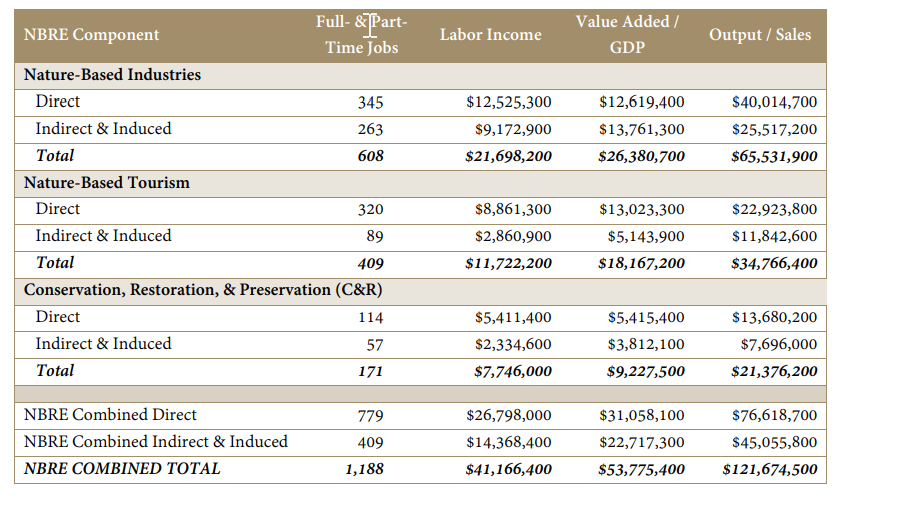
Included in these numbers are jobs both directly and indirectly tied to these industries.
George Frisvold, one of the study's authors explained that indirect income and sales occur when one industry generates demand for other industries.
“People working in those businesses have paychecks... profits, and they are spending that in the economy on local goods and services,” Frisvold said.
Directly, the nature-based restorative economy supported 779 jobs, $31.1 million in county GDP and $76.6 million in sales in 2019.
The GDP of this type of economy is more than the mining, quarrying, oil and gas extraction industry contributing $22.5 million to the county’s GDP in 2019; as well as the utilities ($7.86 million) and construction ($26 million) industries, the study stated.
Total GDP for the county in 2019 totaled $2.1 billion, according to the study, according to the county.
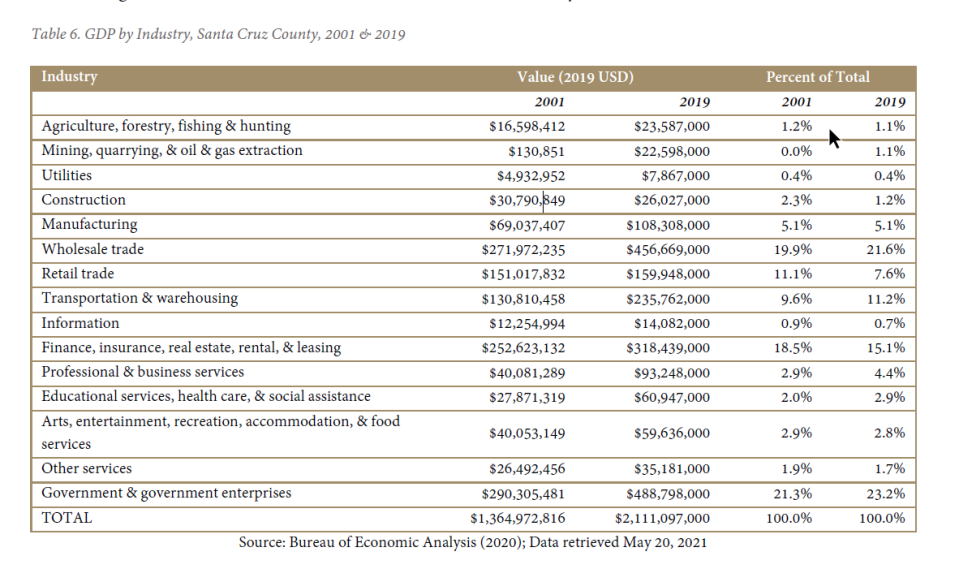
Of the total GDP attributed to the county’s nature-based restorative economy, conservation, preservation and restoration work directly contributed $5.4 million county GDP, $13.7 million in sales and 114 jobs and $5.4 million in income, according to the study.
Nature-based tourism contributed the highest to the nature-based restorative economy with $13 million in county GDP, $22.9 million in sales, 320 jobs and $8.9 million in income.
Some popular nature areas to visit include the Patagonia-Sonoita Creek Preserve to hike, birdwatch, and view wildlife, or the Las Cienegas National Conservation Area, a popular park for outdoor recreation, including wildlife viewing, birdwatching, camping, hiking, mountain biking, equestrian activities and hunting. Santa Cruz County has many other federal and state parks and protected areas where tourists can enjoy the outdoors, as listed in the study.
The study also concluded that industries directly part of (or closely linked to) this type of economy accounted for 30% of net job gains in Santa Cruz County.
Santa Cruz County is small but mighty
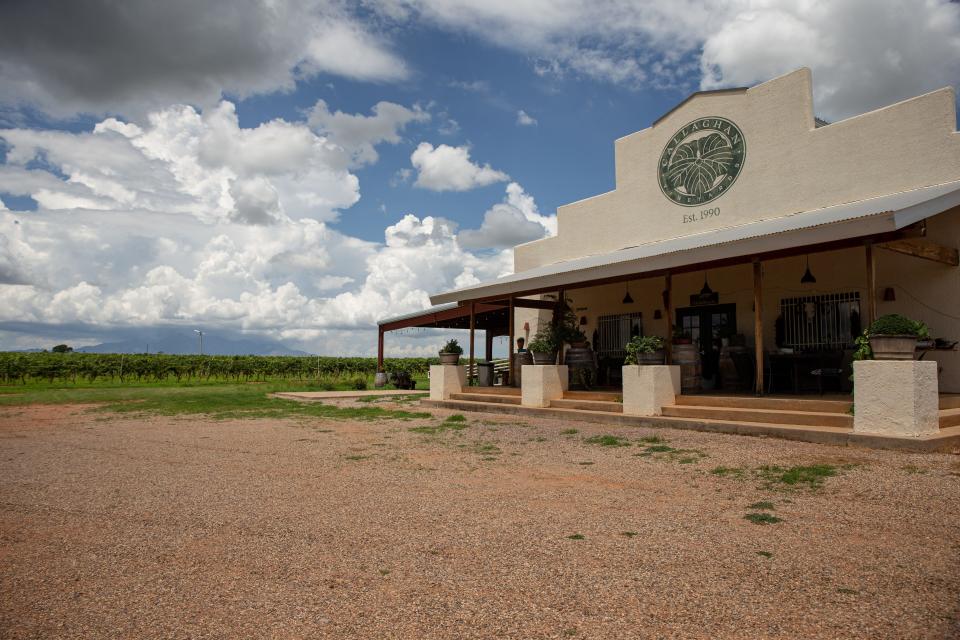
Santa Cruz County is nestled in between its much larger neighbors Pima and Cochise counties.
While Santa Cruz may be the smallest county in Arizona, “there’s a lot going on there,” said Dari Duval, another author of the study.
In 2019, 46,500 were living in Santa Cruz County, about 40,000 of which were living in Nogales, according to the study. As of the 2021, the county’s population was estimated to be around 47,883 people.
Santa Cruz County is most well-known for the economic activity driven by its largest city Nogales, located on the border, but rural areas also have a lot to offer, Duval said.
The county's GDP ranks 11th highest out of the 15 counties in the state, according to the study.
During the study, researchers found that agriculture jobs in the county have increased in the last decade, much of that due to the area's growing wine industry.
“The NBRE, nature-based economy is an even larger share of what’s going on outside of that Nogales area,” Duval said, adding that outside of Nogales and Rio Rico, the nature-based restorative economy is an important source of jobs and livelihood in the more rural areas of the county.
Santa Cruz County is a federally designated National Heritage Area because of its rich history, natural and cultural resources. It is also part of a region called Madrean Sky Islands, isolated mountain ranges with incredible wildlife diversity.
Within these natural landscapes, Santa Cruz County has numerous state and national parks and protected land. The county is also home to the highest concentration of federally-listed threatened and endangered species in Arizona.
The study listed four species: the Western yellow-billed cuckoo (threatened), the Gila topminnow (endangered), the Mexican garter snake (threatened), the Huachuca water umbel (endangered) and the Chiricahua leopard frog (threatened).
The county also has one of the highest diversity of birds with 453 species and serves as an important region for mammals including jaguars, ocelots and 43 other species of mammals, including pronghorn antelopes, brown bears, bobcats, and mountain lions.
A small town with big environmental responsibilities
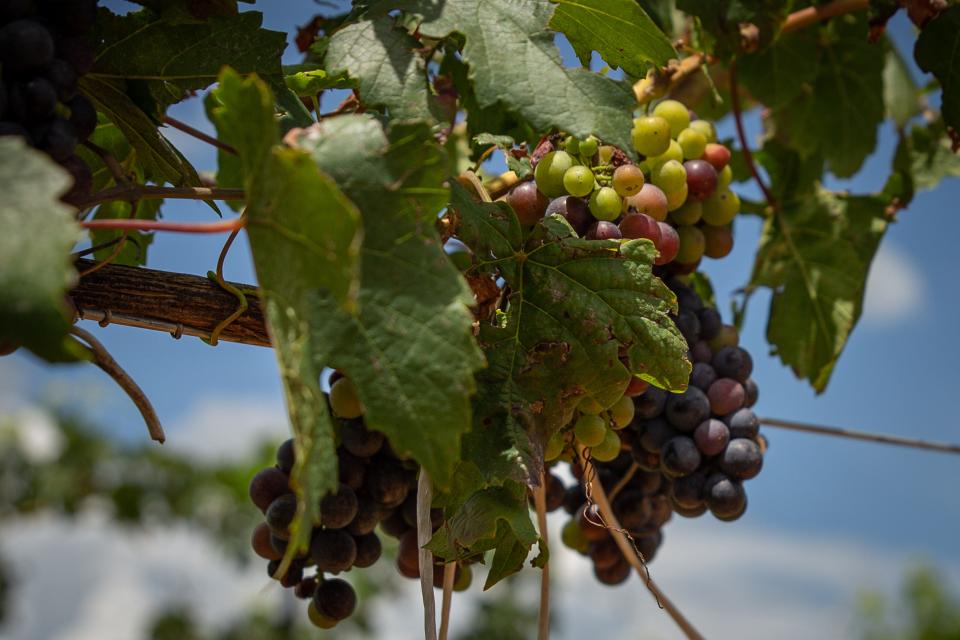
Patagonia is one small town with a huge impact on wildlife in Santa Cruz county.
The tiny town of just 804 residents, according to the most recent census data, has one of Arizona’s few permanently flowing streams, as well as many endangered fish, butterflies, birds and other wildlife. The area also includes one of the most important wildlife corridors in the world for some migrating species that travel between "isolated mountain ranges, protected natural areas, and riparian areas," stated the study
For this reason, there are numerous nonprofits there that work towards preservation, conservation and restoration.
One of those is the Borderlands Restoration Network which was among one of the non-profits represented in the 2019 study’s steering committee.
Lynn Davison, a Borderlands board member and a volunteer with Patagonia Area Resource Alliance, was one of several people involved in non-profits in the area that envisioned this study.
“We were very interested in preserving the natural landscape and the economies that were tied to that landscape, and the cultures that have lived and do live on that landscape,” she said.
The project’s steering committee partnered with the town of Patagonia, who agreed to manage a contract with a selected consultant for the study.
Davison said money for the study was raised by the nonprofits themselves. While she did not remember the exact cost of the study, she said the organizations raised around $40,000 for the study and future outreach.
To find a consultant to undertake the study, the group put out a request for proposal and chose researchers from the University of Arizona.
The group’s goal was to find out what exactly the restoration economy contributed to Santa Cruz’s overall economy, and use that information to help bring more resources to the region.
The group also wanted to educate the public about what is possible in a restorative economy, and to use the information as a baseline for showing “what you can do with a restorative economy without prompting for growth versus the extractive economy which limits resources, and in some cases diminishes some sectors of the economy,” Davison said. Merriam Webster defines extractive as the withdrawal of natural resources by extraction. Extractive economies depend on resource extraction for revenue.
Bzzzz: Cochise County's 'killer bee guy' Reed Booth sees recent uptick after slow summer
The study gave Borderlands a “scientific place” to advance their mission to grow the restorative economy through restoration, conservation and education.
Borderlands has numerous outreach and educational programs, and restoration projects, one of which includes repairing areas of the Madrean Archipelago, or Sky Islands, “one of the most ecologically diverse landscapes in North America,” according to its website.
Borderlands also works with ranchers to do restoration work on their properties to make best use of available water.
It is working with ranchers on developing strategies like rotating pasture lands to make the most of the land available for ranching, and to “make ranching as healthy and sustainable as possible,” Davison said.
She emphasized how Borderlands is unique in its goals as an environmental organization because it aims to help everyone living on the landscape and “all the resources of that landscape including people.”
She also noted that the study was “conservatively done” because it was limited by the kinds of data researchers were able to collect at that time.
The authors of the study reiterated the limitations, noting some benefits of nature-based restorative economy that were not included in the study. One of those benefits is the simple joy of being in nature, which does not always have a direct economic benefit.
“If you go to a park, you go to a lake, you go to a nature area you’re deriving well-being satisfaction that you're not paying for,” Frisvold said about the limitations of the study. Even if people are not paying to enjoy nature, there is still a value to that enjoyment, he added.
He noted another indirect value not measured in this study: real estate. He said in areas near nature, property values might increase for being near green spaces.
“There’s often premiums built into homes that have better environmental surroundings,” he said.
Davison said she and the others who contributed to the study were happy with how the study was done. They met with officials including the Santa Cruz County supervisors, and spread the report widely among the public.
“The more that people understand what’s possible, the more that we feel like we will be promoting the region in ways that sustain people as well as water and wildlife,” Davison said.
Callaghan, the owner of Callaghan Vineyards, said since 2019 county politicians have better understood the value of rural areas like Sonoita-Elgin and several new wineries have opened up.
"To some extent the county government is getting the picture ... they are finally seeing what it (the nature-based restorative economy) can do," he said.
Coverage of southern Arizona on azcentral.com and in The Arizona Republic is funded by the nonprofit Report for America in association with The Republic.
Reach the reporter at sarah.lapidus@gannett.com.
Subscribe to azcentral.com today. What are you waiting for?
This article originally appeared on Arizona Republic: Nature-based work plays big role in Santa Cruz County's economy

